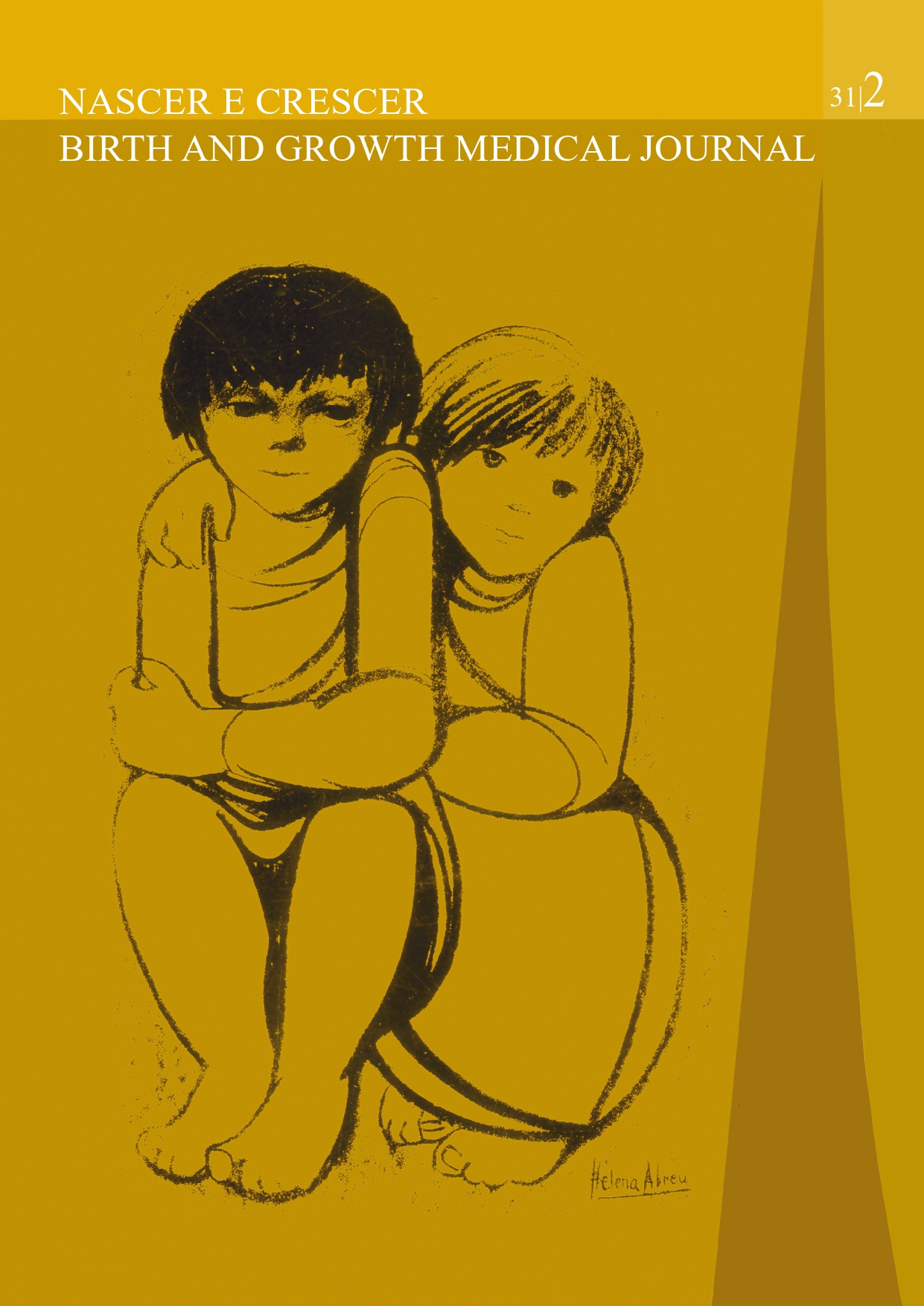A case of wet laughs
DOI:
https://doi.org/10.25753/BirthGrowthMJ.v31.i2.19477Abstract
Introduction: Giggle incontinence (GI) is a rare form of daytime urinary incontinence characterized by involuntary, unstoppable, and large-volume voids with complete bladder emptying during or immediately after laughing.
Case report: A 15-year-old girl presented to the Family Health Unit with concerns of involuntary bladder leakage while laughing, sometimes with total bladder emptying, during the past two years. Symptoms did not manifest while coughing, sneezing, straining, or with nocturnal enuresis. No complaints of dysuria, pollakiuria, or constipation were reported. On physical examination, the girl showed adequate growth and weight, and urine analysis, urine culture, and renal-vesical ultrasound were normal. She was referred to the Pediatric Outpatient Clinic of a secondary hospital, where GI was diagnosed.
Discussion: GI is a clinical syndrome with potentially underestimated incidence. Due to their closer relationship with patients, family doctors should be aware of this condition and recognize its symptoms.
Downloads
References
Nevéus T, von Gontard A, Hoebeke P, Hjälmås K, Bauer S, Bower W, et al. The Standardization of Terminology of Lower Urinary Tract Function in Children and Adolescents: Report from the Standardisation Committee of the International Children’s Continence Society. Journal of Urology. 2006;176(1):314-24. https://doi.org/10.1016/S0022-5347(06)00305-3.
Fernandes L, Martin D, Hum S. A case of the giggles. Canadian Family Physician. 2018;64(June 2018):445-7.
Richardson I, Palmer LS. Successful treatment for giggle incontinence with biofeedback. J Urol. 2009;182(4 Suppl):2062-6. doi: 10.1016/j.juro.2009.03.021.
Logan BL, Blais S. Giggle incontinence: Evolution of concept and treatment. J Pediatr Urol. 2017;13(5):430-5. https://doi.org/10.1016/j.jpurol.2017.04.021.
Deshpande AV, Craig JC, Smith GH, Caldwell PH. Management of daytime urinary incontinence and lower urinary tract symptoms in children. J Paediatr Child Health. 2012;48(2):E44-52. https://doi.org/10.1111/j.1440-1754.2011.02216.x.
Roda J, Mendes L, Figueiredo N. Enurese risória. Acta Pediátrica Portuguesa. 2013;44(5):260-2.
Middleton T, Ellsworth P. Pharmacologic therapies for the management of non-neurogenic urinary incontinence in children. Expert Opin Pharmacother. 2019;20(18):2335-52. Epub 2019/10/24. https://doi.org/10.1080/14656566.2019.1674282.
Berry AK, Zderic S, Carr M. Methylphenidate for giggle incontinence. J Urol. 2009;182(4 Suppl):2028-32. https://doi.org/10.1016/j.juro.2009.04.085.
Fuentes M, Magalhaes J, Barroso U, Jr. Diagnosis and Management of Bladder Dysfunction in Neurologically Normal Children. Front Pediatr. 2019;7:298. Epub 2019/08/14. https://doi.org/10.3389/fped.2019.00298.
Chandra M, Saharia R, Shi Q, Hill V. Giggle incontinence in children: a manifestation of detrusor instability. J Urol. 2002;168(5):2184-7; discussion 7. https://doi.org/10.1097/01.ju.0000034703.53145.c3. PubMed PMID: 12394756.
Downloads
Published
How to Cite
Issue
Section
License
Copyright (c) 2022 Patrícia Graça Silva, Manuela Moreira

This work is licensed under a Creative Commons Attribution-NonCommercial 4.0 International License.
Copyright and Authors' Rights
All articles published in Nascer e Crescer - Birth and Growth Medical Journal are Open Access and comply with the requirements of funding agencies or academic institutions. For use by third parties, Nascer e Crescer - Birth and Growth Medical Journal adheres to the terms of the Creative Commons License "Attribution - Non-Commercial Use (CC-BY-NC)".
It is the author's responsibility to obtain permission to reproduce figures, tables, etc. from other publications.
Authors must submit a Conflict of Interest statement and an Authorship Form with the submission of the article. An e-mail will be sent to the corresponding author confirming receipt of the manuscript.
Authors are permitted to make their articles available in repositories at their home institutions, provided that they always indicate where the articles were published and adhere to the terms of the Creative Commons license.


